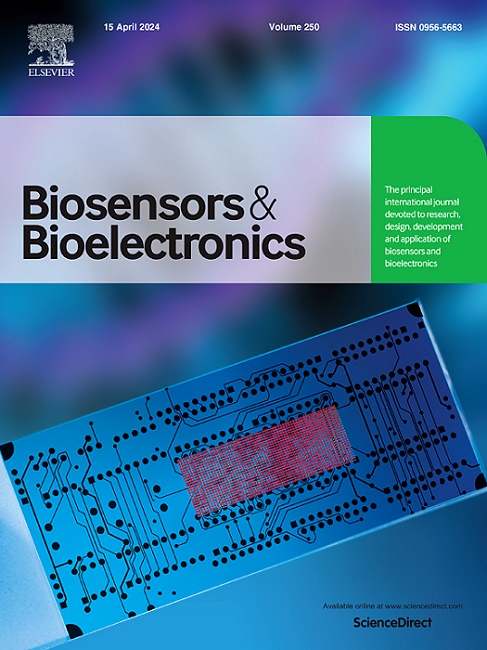细胞外囊泡(ev)无标记表面增强拉曼光谱(SERS)与拉曼标记标签的集成,以提高卵巢癌的诊断
IF 10.5
1区 生物学
Q1 BIOPHYSICS
引用次数: 0
摘要
我们报告了一种概念验证诊断策略,该策略将多路拉曼标记抗体标记与无标记表面增强拉曼光谱(SERS)和机器学习(ML)相结合,以改善通过细胞外囊泡(ev)检测卵巢癌。使用尺寸排除色谱法从患者血浆中分离出ev,并使用针对三种卵巢癌生物标志物(CA-125、HE4和CA-19-9)的聚乙烯拉曼标签进行标记。将标记的和未标记的电动汽车沉积在sers活性衬底上,并使用定制的共聚焦拉曼显微镜收集光谱。将标签衍生信号纳入SERS分析增强了可解释性并增加了分子特异性。我们使用不同的ML模型来评估分类性能,这些模型应用于来自卵巢癌患者和健康对照的光谱数据集。与单独使用任何一种方式相比,联合使用拉曼标签和无标签区域提高了分类精度。值得注意的是,支持向量机(SVM)达到了95%以上的准确率、灵敏度和特异性。与ELISA相比,我们的SERS平台在检测小样本量的ev相关生物标志物方面表现出更高的灵敏度。这种方法通过将光谱特征与已知生物标志物联系起来,解决了基于sers的诊断的一个关键限制,提高了机器学习液体活检的透明度和性能。本文章由计算机程序翻译,如有差异,请以英文原文为准。
Integration of label-free surface enhanced Raman spectroscopy (SERS) of extracellular vesicles (EVs) with Raman tagged labels to enhance ovarian cancer diagnostics
We report a proof-of-concept diagnostic strategy that integrates multiplexed Raman-tagged antibody labeling with label-free surface-enhanced Raman spectroscopy (SERS) and machine learning (ML) to improve the detection of ovarian cancer via extracellular vesicles (EVs). EVs were isolated from patient plasma using size-exclusion chromatography and labeled with polyyne-based Raman tags targeting three ovarian cancer biomarkers: CA-125, HE4, and CA-19-9. Labeled and unlabeled EVs were deposited onto SERS-active substrates, and spectra were collected using a custom confocal Raman microscope. Incorporating the tag-derived signal into SERS analysis enhanced interpretability and added molecular specificity. We evaluated classification performance using various ML models applied to spectral datasets from a cohort of ovarian cancer patients and healthy controls. Combined use of the Raman tag and label-free regions improved classification accuracy compared to either modality alone. Notably, support vector machine (SVM) achieved over 95 % accuracy, sensitivity, and specificity. Compared to ELISA, our SERS platform demonstrated improved sensitivity in detecting EV-associated biomarkers from small sample volumes. This approach addresses a key limitation of SERS-based diagnostics by linking spectral features to known biomarkers, offering improved transparency and performance in ML-enabled liquid biopsy.
求助全文
通过发布文献求助,成功后即可免费获取论文全文。
去求助
来源期刊

Biosensors and Bioelectronics
工程技术-电化学
CiteScore
20.80
自引率
7.10%
发文量
1006
审稿时长
29 days
期刊介绍:
Biosensors & Bioelectronics, along with its open access companion journal Biosensors & Bioelectronics: X, is the leading international publication in the field of biosensors and bioelectronics. It covers research, design, development, and application of biosensors, which are analytical devices incorporating biological materials with physicochemical transducers. These devices, including sensors, DNA chips, electronic noses, and lab-on-a-chip, produce digital signals proportional to specific analytes. Examples include immunosensors and enzyme-based biosensors, applied in various fields such as medicine, environmental monitoring, and food industry. The journal also focuses on molecular and supramolecular structures for enhancing device performance.
 求助内容:
求助内容: 应助结果提醒方式:
应助结果提醒方式:


